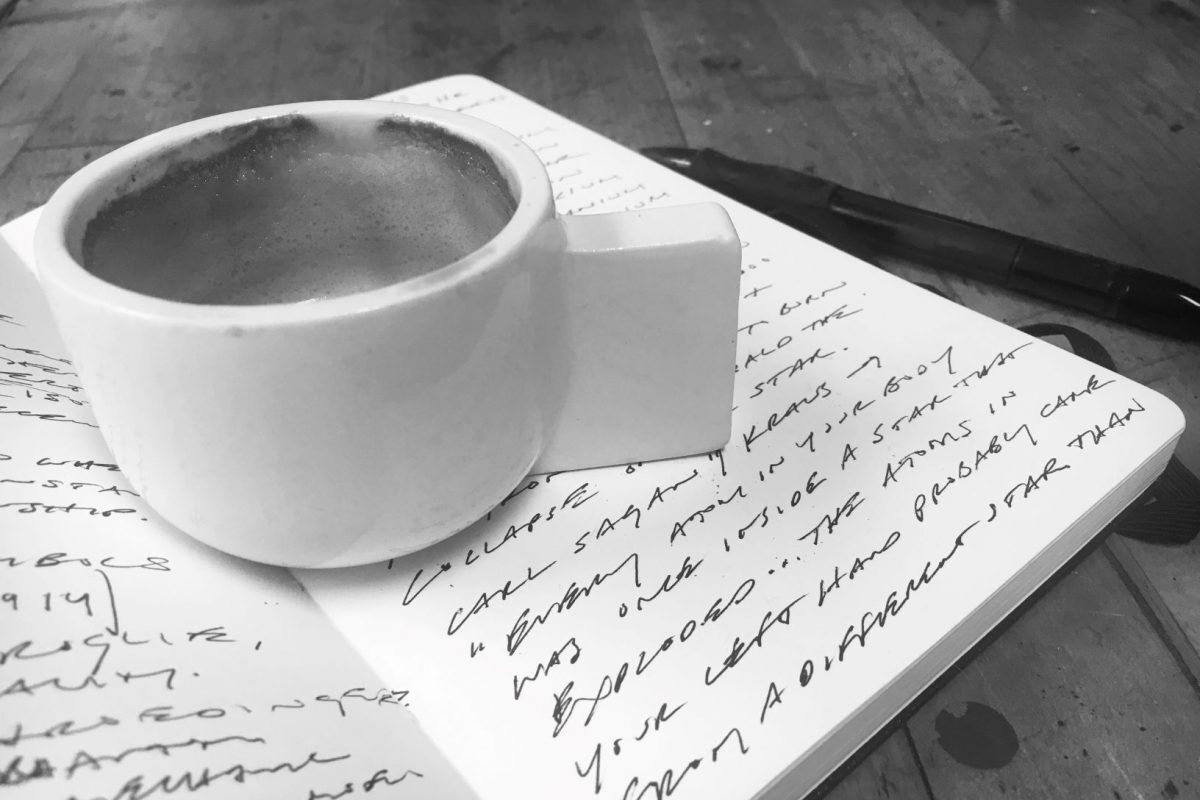“I’m talking about how art finds a way.”
Christine Corday is in her studio about an hour-and-a-half north of New York City, and only half-an-hour away from Westchester County, the location of the original coronavirus epicenter in New York.
A year ago Corday’s RELATIVE POINTS was on view at CAM. Twelve 10,000 pound sculptures, lovably blunt cylinders, coarse and flat on one end, tapering to a point on the other, set about the main galleries. Each pointing to a different direction, each direction a line toward the center of the universe. A center that is nowhere and everywhere.
At CAM we claimed Corday as a 21st-century alchemist, a label she adored so much she designed a tote bag with the moniker. Corday’s sculptures were the result of compressing metalloid grit and elemental metals into form. She brought her alchemical powers to bear to invent a methodology for her materials to take shape and hold, producing objects dense enough to establish a monumental character yet light enough to travel by flatbed truck and forklift and come to rest on the CAM floor. Audiences were encouraged to touch these seemingly static structures, making for a subtle interactive art experience. Hands, foreheads, faces, the occasional hugs causing a transference of energy through the heat of bodies—the forms gently re-sculpted again.
Corday still has interactivity in mind. “We each have a life and what do we contribute with it?” she asks. “One of the earliest conversations I had with Lisa Melandri [CAM Executive Director] , we were talking about iron. This was long before RELATIVE POINTS came into form. Basically, four grams of iron is part of our bodies. Iron is the very last material forged within a star forcing it to supernova. Four grams of that powerful creative/destructive element resides in us. A small hardware nail is also made up of some four grams of iron. I said to Lisa, how are we contributing our ‘nail’? What are we putting it to, putting it toward?”
How is Corday getting along during these days and nights of fear, anxiety, and hourly death tolls, of her multiple art projects moving headlong into the future until they are caught in suspended animation? “It directly strikes at my very core of what art is. For me, art has always been a cultural infrastructure. My art is seen as an intersection between art and science, but it is much larger. Art is a gathering of interrelationships at the founding of culture, unified conversations being had between each other, such as in a pandemic: health, science, technology, and art joining a chorus of humanity. Art is an act of culture. One voice may lead but another contributes and more join.”
Corday’s use of music as metaphor comes from her early upbringing. “It began for me by being classically trained at the piano. I think because of that experience I’ve never seen art as solely self-expression. As a pianist, you’re in conversation with a composer—and for me at that time they were dead white men, you know, the romantics.
“But the dialogue between pianist and composer goes deep into actual communion with the work, and the physical piano itself is part of that conversation.” Corday reflects on the technological shift from harpsichord to pianoforte, and the influence of Beethoven’s deafness on the dynamic range of the piano. “He had to ask what the instrument could be with the piano-maker.”
Corday shares with me the following analogy. If a piano or violin or any instrument may be considered a tool, the advancing and refining of that tool involves a physical evolution based on mechanics. The basis of sound-making evolves from pluck to strike; a soundboard is imagined and constructed. The engineering of the instrument/tool advances through a continual back and forth between fabricators and artists. It is never finished.
“And this continues for me,” Corday says, “conceptually, as an example of advancing the instrument/tool of art itself. It’s a vast dynamic. It goes on in shared conversations that go on and on, evolving the ‘instrument.’ A never ending, near-infinite conversation of many different fields. There you find art revealed in the cultural infrastructure.”
A cultural infrastructure Corday built up from idea to drawings to investigations of Isaac Newton’s 17th-century formulae to laborers in an Ohio foundry to truck and forklift drivers. As we try to imagine the other side of this pandemic, Corday’s idea of infrastructure has a hopeful ring.
“We now see a better example of how everyone has a place in this global conversation. From that I can see something positive. We can’t afford this nonsense of isolationism and nationalism, which never had a foundation in the first place.
“We are a fragile but resilient planet. There are good things in the world. Art for me is not self-expression, as if it were somehow some isolated act. It’s an inseparable cultural conversation that engages with everyone.”
—Eddie Silva
